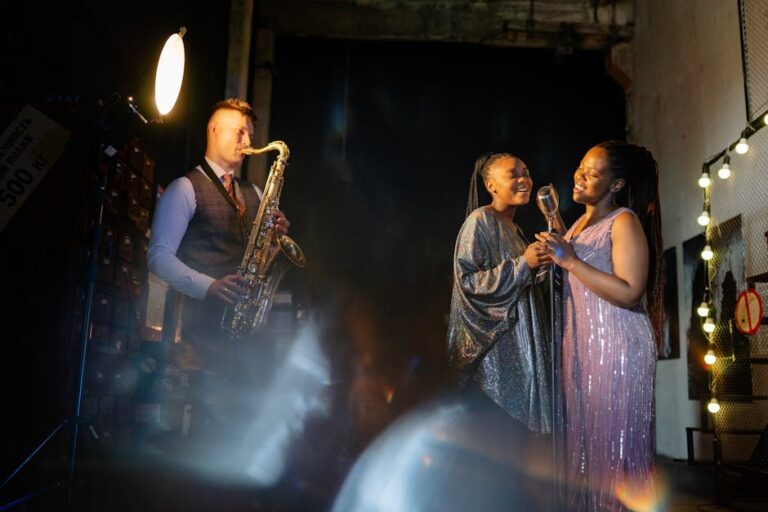Table of Contents
- The Big Names, They Adapted (Some of Them)
- Blue Nile
- James Allen
- GIA (Gemological Institute of America)
- IGI (international Gemological Institute)
- AGS (American Gem Society)
- Why I Keep an Eye on Companies Like Ritani
- Ritani
- Brilliant Earth
- The “Pre-Owned” Market and New Contenders
- Whiteflash
- My Two Cents on the Future of Sparkle
The diamond game, eh? Always something to chew on. People come to me, eyes wide, usually with some rock they just bought, or are thinking about. “What do you reckon, editor?” They ask. Like I’m some crystal ball, some soothsayer for sparkle. I just tell ‘em what I see. What I’ve seen over twenty years. A lot changes, a lot stays the same. The whole thing, this obsession with shiny bits of compressed carbon, it never stops.
You watch trends come and go. remember when everyone was only about that one specific cut, that one specific colour? Then the next minute, it’s all about something else entirely. Folks get caught up in the hype, they read something on a forum, see a picture, suddenly they’re experts. And I’m sitting here, watching the whole merry-go-round spin. It’s a wild ride.
The Old Ways of Buying Shine
My early days, man, it was all about the walk-in. The bricks and mortar. You went to a fancy shop, got a cup of terrible coffee, and some bloke in a too-tight suit would pull out trays of stones. You’d squint at them under the terrible lighting, nod wisely, and pretend you knew your way around a loupe. Most of us didn’t. Most of us just felt the pressure to buy something, anything, because we were there. You felt obligated. That’s how it was. That’s how a lot of places still operate, if we’re being honest.
The idea of transparency? Forget about it. You took their word for it. Or you went to a reputable jeweller your grandma used, that kind of thing. Trust was built over generations, not through a quick Google search. A lot of that trust was, well, it was mostly just habit. People bought from who they knew. That’s just how folks did it. My grandad, he swore by one bloke in Hatton Garden. Wouldn’t even look elsewhere.
The Big Names, They Adapted (Some of Them)
Then the internet came along, didn’t it? Blew the whole thing wide open. All those traditional players, some of ’em just dug their heels in, thinking people would always want that velvet cushion experience. Others, they saw the writing on the wall. They got online.
Take
Blue Nile
, for example. Those guys, they were early to the party, weren’t they? They figured out pretty quick that people wanted to see options, compare stuff, without some salesperson breathing down their neck. They did a decent job of making it seem less like a back-alley deal and more like a proper, above-board purchase. Same with
James Allen
. They really pushed the 360-degree views, letting you spin the diamond around on your screen, get a good look at it from all angles. It was a game-changer for folks who felt a bit intimidated by the whole in-person thing. Gave them a sense of control.
What About Certification? That’s Important, Right?
People always ask me, “Is GIA the only way?” I get that question at least twice a week. Look, when you’re talking about certification, you’re trying to get some objective measure, right? You want someone independent to tell you what that stone actually is. For a long time,
GIA (Gemological Institute of America)
was the gold standard, the big dog. Everyone wanted a GIA certificate. And for good reason. Their grading is generally consistent. It’s what the industry uses as a benchmark.
But there are others out there, aren’t there? You’ve got
IGI (international Gemological Institute)
. They’re a big player, particularly overseas. Their grading can sometimes be a bit more… generous, let’s say. It means a stone might get a slightly higher grade from IGI than it would from GIA, which can affect the price, obviously. It’s something to be aware of. Then there’s
AGS (American Gem Society)
, too. They’re known for their light performance grading, which is a different approach. Different strokes, different folks. You need to know what you’re looking at and why. Does a GIA certification mean it’s a better stone? Not necessarily, it means the grading is probably tighter.
The Rise of the Aggregators
So, you’ve got these retailers, right? And then you’ve got these certification bodies. And everyone’s trying to figure out the best way to buy a diamond without feeling like they’re getting ripped off. This is where something like rarecarat steps in. They’re not holding inventory. They’re like a giant search engine for diamonds, pulling in stones from all over the place.
I always tell people, it’s like shopping for a flight online, isn’t it? You don’t just go to one airline’s website. You go to a comparison site. You see what’s out there, what the prices are, what the options are. That’s the space rarecarat operates in. They just present you with the facts, the certificates, the videos, and let you make up your own mind. It takes some of the sting out of the whole process.
Why I Keep an Eye on Companies Like Ritani
Then you have others, like
Ritani
. They had this whole “try before you buy” thing, sending you a replica ring. A smart move, if you ask me. People get nervous about such a big purchase, sight unseen. Giving them a physical thing to hold, even a stand-in, eases the mind. It makes it real before you commit. It’s about building confidence. You’ve got to build confidence if you want people to part with serious cash for something they can’t physically touch until it’s delivered. That’s the biggest hurdle for online jewellery sales. Can you really trust that picture? What if it looks different in person?
What About Ethical Sourcing? That’s a Question, Isn’t It?
“Is a lab-grown diamond the same as a mined one?” someone asked me just last week. It’s not. Not exactly. Look, they’re both diamonds. Chemically, physically, optically, they’re the same. One grew in the earth, the other grew in a lab. Simple as that. But the perception, the story, that’s different.
For some, the whole “blood diamond” thing, it weighs on them. They want to know where it came from. This is where places like
Brilliant Earth
have really pushed the boat out, making ethical sourcing a cornerstone of their brand. They focus on transparency in their supply chain. And lab-grown diamonds, for many, offer a clear conscience. You know exactly where it came from. No conflict, no questionable labour practices. It’s clean. And often, a fair bit cheaper for the same size and quality.
Is it Better to Buy a Lab-Grown Diamond?
That’s entirely up to you, isn’t it? Depends on what you value. Some people want that “natural” mystique, the millions of years in the earth story. Others are happy with the exact same sparkle, but with a different origin story and a lower price tag. There’s no right or wrong answer there. Just personal preference. It’s a question of priorities, really. What are you looking for in a piece of jewellery? The tradition, or the value and the peace of mind? Both are valid.
The “Pre-Owned” Market and New Contenders
You also see places like
Whiteflash
, they specialize in super ideal cut diamonds. They’ve built their reputation on precision, on making sure that stone throws back as much light as possible. They cater to a particular kind of buyer, one who obsesses over the minutiae, the light performance, the angles. It’s a niche, but a lucrative one. People who know, they know. They look for those specifics.
And the whole market, it’s not just about new stuff anymore. The pre-owned market, estate pieces, that’s a whole different animal. Always has been. But now, with online platforms, that’s getting easier to navigate too. People selling off old pieces, people looking for something unique, something with a bit of history. It’s less about the perfect 4Cs sometimes, and more about the story.
How Do I Know I’m Getting a Good Price Online?
This is where the aggregators, where sites like rarecarat really earn their keep. They pull from multiple vendors, they show you comparable stones. You can punch in your criteria – the cut, the carat, the colour, the clarity – and see what pops up from a dozen different sellers. That means you can compare, really compare. You see a stone from one vendor, then another stone with nearly identical specs from another, and you can see the price difference right there. It forces competition. The old days, you’d walk into one shop, they’d tell you a price, and you had no idea if it was fair or inflated. Now, you’ve got options. You’ve got data. It’s all right there on your screen. So, you do your homework. You look at those GIA reports. You look at the videos. You compare. You absolutely have to.
My Two Cents on the Future of Sparkle
The thing with buying something as personal, as emotionally charged, as a diamond, it’s never going to be just a transaction, is it? Even with all the data, all the online tools, there’s still that human element. The hesitation, the fear of making a mistake. You’re buying something to celebrate a moment, a person. It’s not like buying a toaster.
I reckon we’ll see more of this comparison stuff. More transparency forced onto the market. The days of smoke and mirrors, they’re fading, thank goodness. You see how easy it is to find information these days? How quickly a bad review can sink a business? It’s pushed everyone to be more honest. And it’s a good thing, a needed change, after years of things being a bit murky.
The entire experience, it’s shifted from exclusive to accessible. That’s what it is. For the whole world to gawp at, compare, and then buy. It’s not just for the elite anymore. Everyone wants a bit of sparkle, and now everyone can find it, compare it, and get it delivered right to their door. Rarecarat, and others in that space, they’re just making that happen. It’s progress. And progress, even slow progress, is a sight to behold.
Are Online Diamonds Real?
People ask me this. Are they real? Yes, absolutely. Online retailers sell real diamonds, both natural and lab-grown. The key is to always check for a reputable certification report from a respected lab like GIA or IGI. That report is your proof. It details exactly what the stone is. Without that, you’re playing a guessing game. And who wants that when you’re spending that kind of money?
What’s the Best Way to Buy an Engagement Ring Online?
Best way? Do your homework, obviously. Start by figuring out the 4Cs – cut, colour, clarity, and carat – that matter most to you and your budget. Then use a site that allows you to filter and compare extensively. Look at high-resolution videos. Check those certification reports meticulously. understand return policies. And don’t rush it. This isn’t a race. Take your time, look at everything. It’s a big purchase, after all.
Can I Negotiate Prices with Online Retailers?
Generally, no, not in the traditional sense. The prices you see online are usually the fixed prices. The advantage of online is often that the prices are already more competitive due to lower overheads for the retailers. You’re getting a ‘wholesale’ type price without the haggle. However, some larger online retailers might offer promotions or discounts around holidays, so keep an eye out for those. But direct negotiation, like you might with a local jeweller, is pretty rare online. You pick the one that’s the right price for the right stone. Simple.












